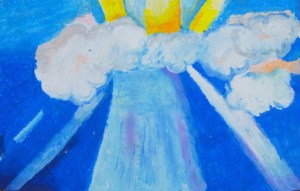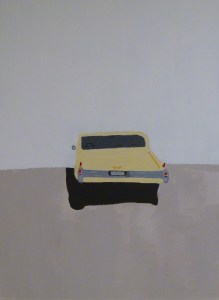A concern that I have heard about having a choice-based or TAB art studio is that students don’t ever work on skills–including observational drawing skills. I would like to address this particular concern. My students work on observational skills…every 2 weeks. How do they do this you might ask? Well, let me tell you…with a drawing test.
Several years ago I went the TAEA (TX Art Ed Assoc) State conference somewhere and I attended a session on creating workbooks. In that session, the two teachers mentioned drawing tests. I was intrigued so I asked for more information. They gave me the run down and I have been implementing them in my classes ever since.
I thought the drawing test was such a great way to have the students spend a few moments of uninterrupted time to concentrate on observational drawing. And, now that I am in a TAB room, I find this time even more beneficial.
Here is the low-down:
MATERIALS:
- many class sets of objects. I went to the dollar store and bought a ton of crap over the year that would be good for drawing–spoons, forks, ramekins, ornaments, salt shakers, etc. For me a class set is 24. I also bought a bunch of cheap bins from the dollar store to hold each set. It is an investment, but worth it. If you can find sets of things…like the forks came in groups of 3, ornaments come in packs of 12. Each box is labeled so it is easy to find and pull out.
- squares of lightweight drawing paper. I have a ton of 60# white drawing paper. I cut the paper down to 5.5-inch squares. I cut a bunch at a time…enough to get me through a few weeks of testing for 4 classes. I keep it all in a bin.
- white poster board or railroad board. This is used to mount the tests for the book at the end
- silver rings. I use the binding rings. This holds the books together and makes it easy for the students to flip through.
- white labels. to be used to label the pages of the book
- double-sided tape. to attach drawing tests to the railroad board
- timer. the tests are timed
HOW TO:
- Each student gets a piece of paper and the week’s object.
- We start off with easy things like Legos and work towards more complicated things.
- Each test is timed. Art 1 starts with 5 minutes and works up to about 10 minutes at the end of the year. Art 2 starts at about 7 minutes and work up until 13 minutes.
- Every week I tell the students things I want them to concentrate on when they are drawing. I usually start with 3 things and as we move along, the easier things get removed and harder things to observe and concentrate on get put in.
- shape
- line quality
- use of 3-d
- surface quality
- no lines
- shading/shadow
- There is no talking during the test
- They must draw the entire time. This means they either need to draw again or try to improve what they have done.
- I also don’t let them listen to music.
- I type up a sheet and post it on the screen during the test. The sheet has the date, the drawing time, and what I am looking for. Also, the reminders about drawing the whole time and talking are at the bottom. I save all these because they give me the information for the labels later on.
Before we start, I give reminders and tips to drawing from life and observing things like shadows and planes. I talk about making connections to help with proportion. I point out things they should notice…like the salt shaker top is not as wide as the glass part. During the test, in a quiet voice, I give reminders about how to observe and things to notice.
When time is up, I have the kids sign their work. The first test they write their names on the back for my reference. The second time we talk about signatures and how artists sign their work.–I show some famous examples like Picasso, Monet, Durer, and myself. After this, they then can write their name on the back and/or sign the front.
From there I take up the tests, grade them, and put them away for safe keeping. Sometimes the kids ask about them, but mostly they kind of forget about the tests themselves. I don’t hide them and if they want to see them, I let them see them. What do I do with them? This is where a good aide comes in. Each test gets mounted on a 6X9 piece of railroad board. Each board gets a label with the date, the test time, and what was the concentration areas. At the end of the year, each board gets hole-punched twice and put on rings. I make a cover page for each book and hand them back the last day of classes (well most of them anyway.)
The students like to look through and see how far they came. They remember which items were hard, why things were hard, which they hated, which were easy, and which they didn’t try on. Many cherish the book for years to come. Several years ago, Ethen left his book behind. I kept it because it was good, Ethen was one of my favorites (don’t tell nobody), and I could use it to remember what objects I used when, etc. This year Ethen was a senior and he saw I still had the book. He wanted it back because he didn’t have any of his drawings. I was sad, but silently happy that his face lit up when he looked through it and remembered our awesome class.
Anyway, this past year I stumbled upon an article that talked about some of the things my students question me about–the main one is the silence/no music thing. Here is an excerpt from the article.
1. What if I told you, you talk too much?
Talking and drawing don’t mix.
The main problems associated with drawing is when you talk you engage your logical, language dominated left side of the brain. This side of your brain is keen on knowing an objects name, labelling it, and organising it.
Often when learning to draw, you need to temporarily hold off judgment and try not to second guess what you think the object should look like, rather than what the object actually looks like.
When you are trying to learn to draw something realistically, you have to engage your right hand side of the brain, which is keener on images and spatial perception.
It’s very hard to do both at the same time.
Why?
Because it causes mind freeze.
Have you ever been in a creative zone of absorption, a state where time travels quickly and you are in what psychology professor Mihaly Csikszentmihalyi calls ‘flow’.
How Does It Feel to Be in Flow?
- Completely involved in what we are doing – focused, concentrated.
- A sense of ecstasy – of being outside everyday reality.
- Great inner clarity – knowing what needs to be done, and how well we are doing.
- Knowing that the activity is doable – that skills are adequate to the task.
- A sense of serenity – no worries about oneself, and a feeling of growing beyond the boundaries of the ego.
- Timelessness – thoroughly focused on the present, our sin to pass by in minutes.
- Intrinsic motivation – whatever produces flow becomes its own reward.
Flow is the mental state when you are fully immersed in an activity, a feeling of full involvement and energy.
You can get to this stage of involvement whilst drawing… until you get interrupted.
The combination of left and right battling against each other makes trying to draw tricky.
You can learn to talk and draw at the same time but it takes practice.
It all starts by understanding how your mind works, and how you can be subconsciously sabotaging your best efforts.
This excerpt is from an article by Will Kemp called “The 3 reasons why you can’t draw, (and what to do about it)”. You can find the remainder of the article here.
I posted the excerpt on the students’ art blog. Next year I plan on having them read the article as part of class, instead of just stumbling upon it.
Like I said, I think having these “tests” are important. I think most kids think they can’t draw and this helps to show them otherwise. Furthermore, it is good to have a time set aside for the students to work on these exercises. Using the word “test” is mean, but I think it somehow gives the exercise a sense of importance in their minds.
Here are some examples from this past year. It is a mix of art 1, art 2, and life skill students.
This slideshow requires JavaScript.



















































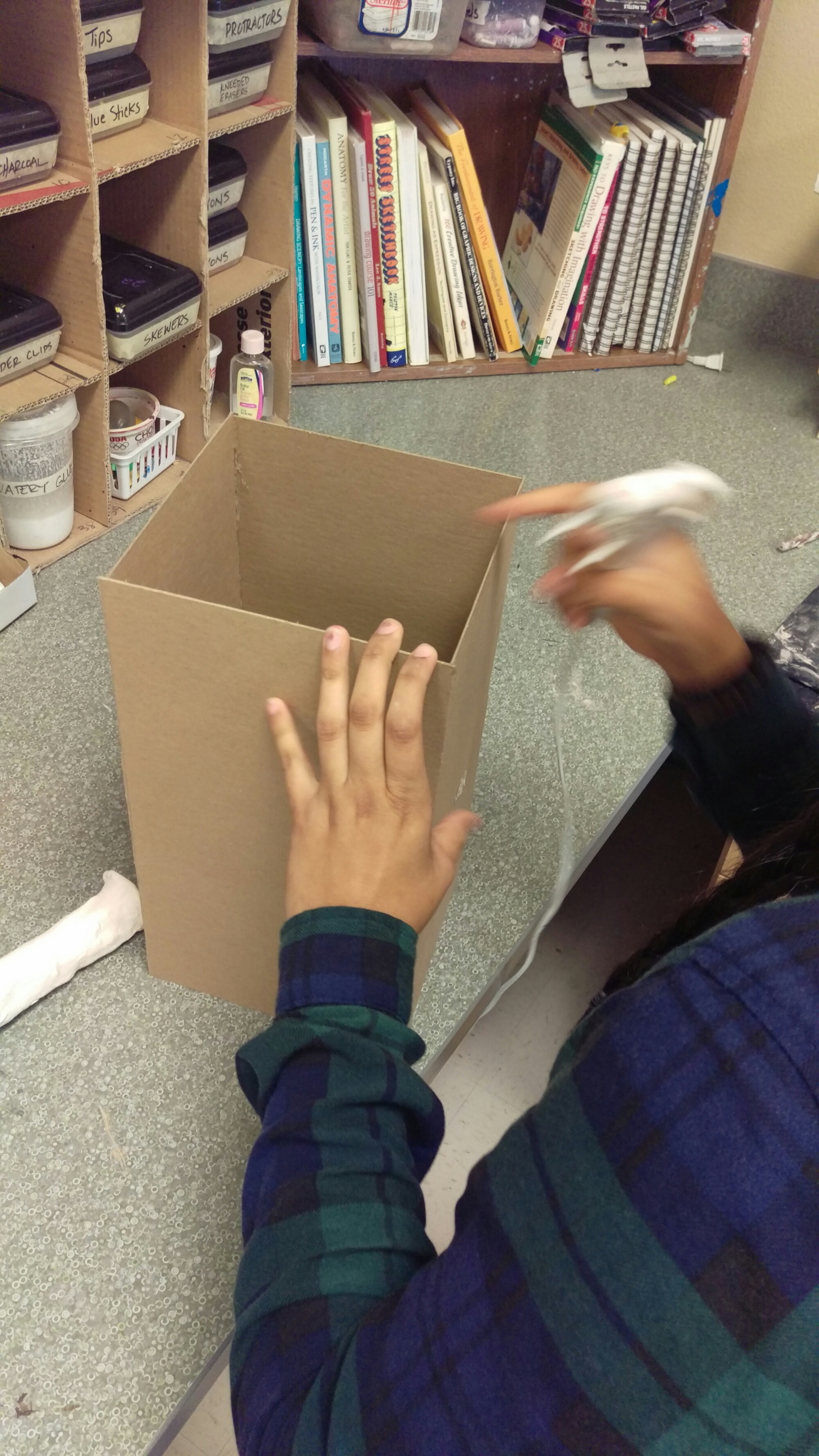

































 Kids worked through artwork until they were satisfied…at times starting a new piece because it just wasn’t working. This just amazed me. I’ve had kids work hard on things before, but never with the fervor I’ve seen this year. They pushed themselves. And it paid off.
Kids worked through artwork until they were satisfied…at times starting a new piece because it just wasn’t working. This just amazed me. I’ve had kids work hard on things before, but never with the fervor I’ve seen this year. They pushed themselves. And it paid off. is stems from a combination of reading their blog posts and the type of conversations I was able to have with my students. Because I wasn’t focused on them creating a certain thing or following a specific rubric, I was able to go deeper with them into their work and their lives.
is stems from a combination of reading their blog posts and the type of conversations I was able to have with my students. Because I wasn’t focused on them creating a certain thing or following a specific rubric, I was able to go deeper with them into their work and their lives.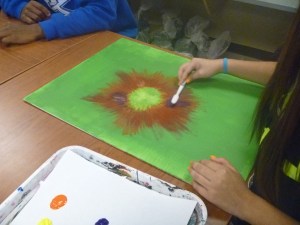
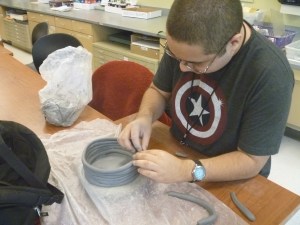 they were moving along and understanding things. So, we moved to artist statements after winter break. Nope. Most students weren’t there yet. I then gave them the option to either do an artist statement or pick 2 behaviors like we did previously. After reading their end of year surveys, I know they didn’t really see the point of them. A handful of students did (and by handful I mean like 5), but the majority couldn’t see the point of writing in art and thought it was just busy work or for a grade. This is good to know. I know my student population has an issue with writing, and I am sure that our state testing is partially to blame. They are not good at writing, sad to say. But, what I gleam from all this is that I need to help them to see that artists write about what they do. That reflecting on the actions they are doing can help them grow as an artist. And, that writing is not just for English and History class.
they were moving along and understanding things. So, we moved to artist statements after winter break. Nope. Most students weren’t there yet. I then gave them the option to either do an artist statement or pick 2 behaviors like we did previously. After reading their end of year surveys, I know they didn’t really see the point of them. A handful of students did (and by handful I mean like 5), but the majority couldn’t see the point of writing in art and thought it was just busy work or for a grade. This is good to know. I know my student population has an issue with writing, and I am sure that our state testing is partially to blame. They are not good at writing, sad to say. But, what I gleam from all this is that I need to help them to see that artists write about what they do. That reflecting on the actions they are doing can help them grow as an artist. And, that writing is not just for English and History class. ut there–both in image, media, and technique. How do I get them to see beyond the typical art room materials? How can I encourage them to try something new? How can I get them to go deeper and think further beyond the obvious? I need to address my line of questioning, the way images get shown to them for inspiration, and helping them to make more dynamic composition decisions.
ut there–both in image, media, and technique. How do I get them to see beyond the typical art room materials? How can I encourage them to try something new? How can I get them to go deeper and think further beyond the obvious? I need to address my line of questioning, the way images get shown to them for inspiration, and helping them to make more dynamic composition decisions.
 ut TAB and choice and the pedagogy. He thought it was wonderful and that it aligned with something that was talked about at some principals/superintendents conference. That made me happy and feel that I was doing the right thing. And, surprisingly, when I said my final good-bye to our current principal, he said something I never thought he would. We didn’t always see eye to eye, and sometimes I thought he just didn’t notice and didn’t understand. But, he told me to keep doing what I was doing. To keep my expectations high and keep pushing the students. He said that that is what they will remember and what they will appreciate.
ut TAB and choice and the pedagogy. He thought it was wonderful and that it aligned with something that was talked about at some principals/superintendents conference. That made me happy and feel that I was doing the right thing. And, surprisingly, when I said my final good-bye to our current principal, he said something I never thought he would. We didn’t always see eye to eye, and sometimes I thought he just didn’t notice and didn’t understand. But, he told me to keep doing what I was doing. To keep my expectations high and keep pushing the students. He said that that is what they will remember and what they will appreciate.

